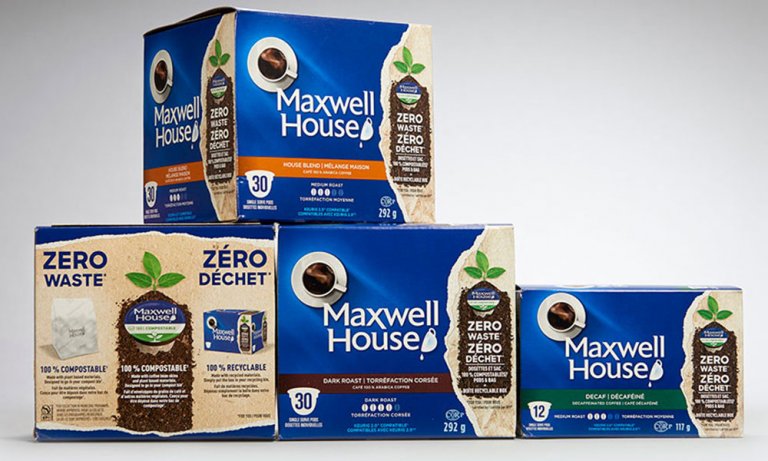Planning for future disruptions is critical to remain competitive. Predicting change far into the future is becoming more challenging. According to our recent study on measuring what matters, focusing solely on return on investment is no longer the best predictor of performance and resilience.
Estimating a company’s future value or investment involves metrics such as customer satisfaction and employee engagement. The competitive landscape is also a useful factor in this process. With the rise of the digital economy today, many other factors have come to influence a company’s future viability.
These new metrics include the emerging and critical level of seamless customer experiences and trust, both of which are critical in providing the business with guardrails to monitor progress. However, metrics alone, whether they are ROI or ROX-focused, will only partially prepare companies that will be disrupted soon. It is also worth investing in high-quality business equipment like weighing scales from reputable providers of business equipment and services.
Measuring Future Value
Companies must constantly monitor emerging metrics to help answer the right metrics and future-proof their organization. To aid in the process, we have listed the top five key metrics that are not typically included in key performance metrics. Instead, the metrics build on current assessments and concentrate on how organizations can create future customer value.
Metric One: Answering A Critical Unmet Need
The majority of businesses are geared toward a customer-centric approach to business. During major transformational and strategic foresight exercises, our observations focus on the ability to sell existing solutions or products rather than exploring unmet customer needs. Identifying these frequently difficult-to-discover needs is critical as the lead time for new product launches has shrunk, as has the commoditization of existing offerings.
- Customer and employee feedback: Identifying unmet needs requires measuring the company’s ability to gather and respond to customer and employee feedback. Tracking customer or employee satisfaction, complaints, and Net Promoter Score (NPS) for consumers and company employee retention can help with this.
- Analysis of the voice of the customer (VOC): Measuring a company’s ability to analyze customer feedback and identify unmet needs. This can be accomplished by keeping track of the number of unmet needs identified through customer feedback and the percentage of those that are addressed. Furthermore, your company’s assisted channels, such as phone help lines or chatbots, are excellent places to sympathize with complaints and issues that undermine the value that businesses provide.
- Market research: Measuring the company’s ability to conduct market research and identify unmet customer needs. This can be done by tracking the number of market research projects completed, the percentage of customer needs identified through market research, and the percentage of those addressed or those that remain unmet. The ability to identify underserved customers and their needs can also lead to significant market growth opportunities.
- Empathy: Measuring the company’s ability to understand and empathize with customers and their needs. This can be done by tracking the number of customer visits, customer interviews, and customer journey mapping activities. In addition, the emergence of sentiment analysis across customer contact points allows customers to map out what is driving customers’ or employees’ levels of anxiety. These anxieties are gateways to discovering new unmet needs.
- User-centered design: Measuring the company’s ability to design products and services that meet customer needs. This can be done by tracking the percentage of products and services developed through user-centered design methods. Using user-centered research, from eye tracking to several steps and corresponding friction points lays a strong foundation for potential areas to deliver value. As a practice manager, you need access to accurate, up-to-date data to make informed decisions.
Metric Two: The Resilience Of The Company Value Proposition
Defining a company’s value proposition takes advantage of insights gained from defining unmet customer needs and how companies can monetize these in future values. Companies must constantly assess how they provide value to their key customers and how their value proposition needs to shift as new customers emerge.
With customers adopting new media at an increasing rate, businesses must ensure that the value they provide aligns with these evolving desires to keep building customer loyalty, like rewards programs. Several metrics can be used to assess the resilience of a company’s value proposition:
- Customer loyalty: Measuring the company’s ability to retain existing customers over time and get repeat business. This can be done by tracking customer retention rates, Net Promoter Score (NPS), lifetime value, and measuring customer loyalty program effectiveness.
- Brand awareness: Measuring the company’s ability to create and maintain a strong brand. This can be done by tracking brand awareness, recognition, and loyalty.
- Market share: Measuring the company’s ability to compete effectively. This can be done by tracking the company’s market share relative to competitors and the market’s growth.
- Product/Service differentiation: Measuring the company’s ability to differentiate its products or services from competitors. This can be done by tracking the unique features and benefits of the company’s products and services.
- Strategic partnerships: Measuring the company’s ability to develop strategic partnerships that enhance its value proposition. This can be done by tracking the number of blocks, the strategic value of the associations, and the success rate of the partnerships.
- Business model resilience: Measuring the company’s ability to adapt its business model to changing market conditions. This can be done by tracking the company’s ability to pivot to new business models and the success rate of these pivots.
Metric Three: Commitment To Creating Desire Through Innovation
Measuring your company’s ability to develop new products, services, and processes that meet changing customer needs while staying ahead of competitors is critical for future-proofing your value proposition. Brands that inspire desire are motivated to establish a sense of discovery and uniqueness in the marketplace, such as Apple with their unique innovative technologies and services.
Innovation takes the insights gained from identifying unmet customer needs and translates them into new consumer values that are personalized via innovation and design. The combination of these factors ensures that the company will be able to withstand many market disruptions and could make them industry disrupters. A company’s use of innovation can be tracked using a variety of metrics, including:
- Research and development (R&D) spending is a percentage of revenue that measures the company’s investment in new products or technologies.
- Patent activity can indicate the company’s level of innovation in terms of new ideas and technologies.
- Sales of new products can indicate the success of the company’s innovation efforts.
- Market share growth can indicate whether the company’s innovative products or services are gaining traction in the market.
- Several successful collaborations with other companies and organizations indicate the company’s ability to leverage external resources to drive innovation.
- Employee turnover rate can indicate the company’s ability to attract and retain talented individuals who drive innovation.
- The return on investment (ROI) of the company’s innovation projects can indicate the financial success of the company’s innovation efforts.

Image Source: BusinessInsider
Metric Four: Nimbleness And Agility
Nimbleness must be measured effectively to ensure organizations have the right culture and processes to address any market shift. To become agile starts from a corporate mandate and filters through the organization through the introduction of scrum and lean methodologies, which have emerged from software development and gone well beyond these boundaries.
Organizations must assess their ability to pivot quickly through strategic foresight and scenario planning. Team structure and how members work together in a collaborative project-based model help support this shift from linear to interconnect processes. The below metrics can give an insight into how well the company is doing in being nimble and agile and where the company can improve.
When evaluating a company’s nimbleness and agility, several metrics can be used:
- Decision-making speed: The rate at which decisions are made and implemented throughout the organization. This can be accomplished by keeping track of the time it takes to move from idea to implementation and the number of approval layers required.
- Flexibility: This is the ability of a company to adapt to changing market conditions, customer needs, and new technologies. Tracking the company’s product and service innovation, process improvement, and ability to pivot to new business models can help with this.
- Responsiveness: The ability of a company to respond quickly to customer needs and feedback. Tracking customer satisfaction, complaint resolution time, and Net Promoter Score (NPS) can help with this.
- Use of strategic foresight: Measuring the company’s use of strategic foresight processes and evaluating the various scenarios as they shift based on emerging trends.
- Organizational structure: Measuring the company’s ability to respond quickly to changing business conditions. This can be done by evaluating the company’s organizational structure, which should be flat, with fewer layers of management and more autonomy for employees.
- Cross-functional collaboration: Measuring the company’s ability to collaborate effectively across different functions, departments, and teams. This can be done by tracking the number of cross-functional projects and their success rate.
- Agile methodologies: Measuring the company’s ability to adopt and implement agile methods such as Scrum, Kanban, and Lean, which allow for faster and more flexible product development.
Metric Five: Sustainable And Social Practices
Organizations that have adopted sustainable and social practices have established a significant point of differentiation while providing impactful messaging that engages their target audience. Many industries and brands, like Maxwell House, have promoted sustainable and fair trade messaging to add value to their brands. Companies, on the other hand, must focus on both as sustainability and social practices become intertwined and table stakes for customers choosing brands or investors deciding which company to invest in.
Some metrics to help measure a company’s sustainability and social practices include:
- Environmental, social, and governance (ESG) performance: These measures include carbon emissions, energy and water consumption, waste management, and biodiversity conservation. Social metrics such as labor practices, human rights, and community engagement are also included.
- Performance on the Triple Bottom Line (TBL): This includes assessing the organization’s financial performance (profitability), social performance (people), and environmental performance (planet).
- Sustainability reporting: This entails assessing a company’s transparency and disclosing sustainability data in financial and non-financial reports.
- CSR initiatives: These assess a company’s commitment to social and environmental causes through philanthropy, volunteerism, and community involvement.
- Supply Chain Sustainability: This involves evaluating the sustainability practices of the company’s suppliers and partners to ensure they are consistent with the company’s sustainability goals.
- Governance: involves examining the company’s governance structure and practices, such as board composition, executive pay, and decision-making transparency.

Image Source: SLD
The Takeaway
While no company or business is completely future-proof, the metrics listed above can provide insight into how well-prepared the company is to face future challenges. Value is constantly being redefined, and monitoring the five categories and supporting metrics will ensure happy customers and that disruption is only a minor hiccup rather than a major cliff.


